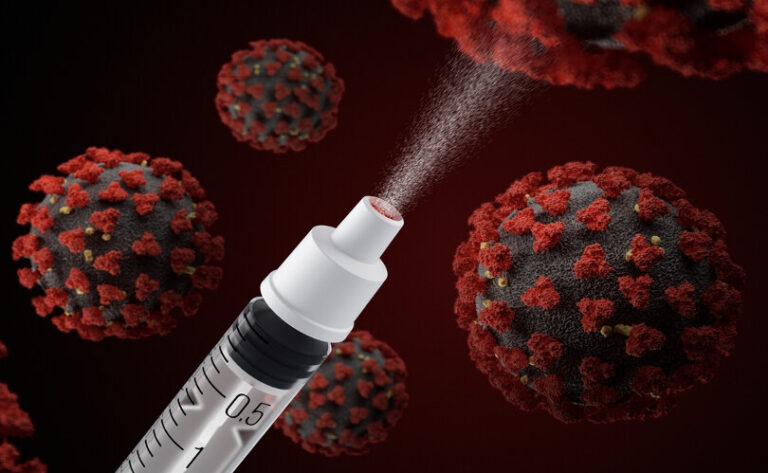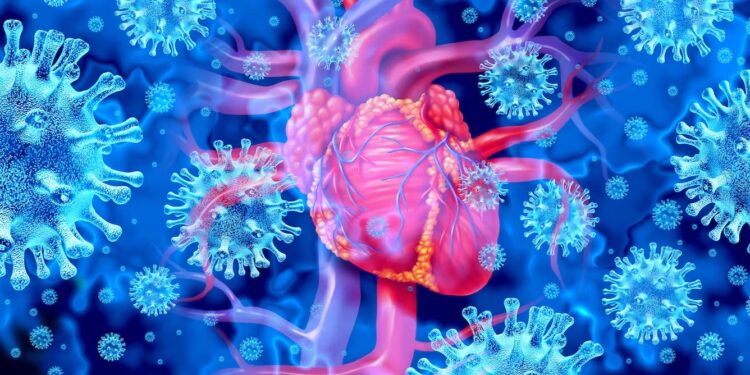Billions of Copies of Residual DNA in a Single Dose of COVID-19 mRNA Vaccine: Preprint

A new preprint study up for peer review finds billions of residual DNA fragments in COVID-19 mRNA vaccine vials.
A new preprint study that has been submitted for peer review discovers billions of residual DNA fragments in the COVID-19 mRNA vaccine vials.
The study’s lead author, molecular virologist David Speicher, who holds a doctorate in virology, told The Epoch Times that it is “the largest study” on residual DNA in COVID-19 vaccines to date.
“In our study, we measured DNA copies of spike, ori (origin of replication), and SV40 enhancer genes,” he said in a statement to The Epoch Times. “The loads of SV40 enhancer-promoter, ori, and virus spike in Pfizer are up to 186 billion copies per dose.”
The spike he refers to is the DNA sequence of the SARS-CoV-2 spike protein, which can be transcribed to spike mRNA and then translated to spike protein in COVID-19 mRNA vaccines. The other two DNAs, SV40 enhancer genes and ori, aid in spike DNA replication.
The final mRNA vaccines, however, should only contain RNA and not residual DNA instructions for spike production.
The gene material in 27 mRNA vaccine vials from 12 different lots was sequenced by the researchers. Moderna supplied 19 vials, while Pfizer supplied eight.
“Further work is needed to investigate if anything in these vaccines is actually integrating into the human genome and what effect that may have,” the lead author of the paper wrote.
Why Would There Be DNA in mRNA Vaccines?
DNA is used to create the mRNA vaccines.
Pfizer initially stated that the DNA for the mRNA vaccines would be created using a PCR machine. The PCR machine would first make many copies of DNA, which would then be sequenced into RNA.
However, because this process would be too slow to meet demand, Pfizer announced that it would instead mass produce the spike DNA using bacteria. The bacteria’s DNA would then be extracted and sequenced to RNA in a machine.
Moderna’s manufacturing report to the European Medicines Agency revealed that the vaccines were made with plasmid DNA. A plasmid is a strand of circular DNA that is shared by bacteria and some parasites. Human DNA is linear, whereas plasmids are circular.
Using bacteria to produce genes and proteins is a common biotechnological process used in pharmaceutical production.
Scientists must first introduce spike protein DNA into the bacteria in order for the bacteria to replicate it. The spike protein DNA carried by the bacteria multiplies as the bacteria multiply.
Other sequences, such as the ori, which signals for DNA replication; the SV40 enhancer gene, which encourages more DNA replication; and an antibiotic resistance gene, which helps scientists identify the bacteria that have taken up the gene, would all be introduced together in a circular bacterial DNA.
It should be noted that the SV40 enhancer gene is derived from the polyomavirus simian virus 40 (SV40), a DNA virus that has been linked to cancer in laboratory animals. The SV40 virus does not contain the gene.
After the bacteria’s mRNA and DNA have been extracted, the DNA is supposed to be removed.
However, as evidenced by the billions of copies of spike, ori, and SV40 enhancer DNA found in the Pfizer vials, it was not cleared efficiently. The Moderna vials also contained millions of copies of ori and spike DNA, but the SV40 enhancer gene was not found.
Why DNA Impurities in mRNA Vaccines Are Concerning
Foreign DNA introduced into the cell with the mRNA runs the risk of being misidentified as human DNA. If so, it can be incorporated into the cell’s blueprint.
According to the lead author, the presence of SV40 enhancer genes increases the risk of DNA integration, citing a 1999 study that discovered maximal transport of DNA using the SV40 enhancer. In terms of overall rate of publication, the 1980s to 1999 were the peak years for SV40 publications.
If the spike protein DNA is incorporated into the host genome, cells will always contain spike protein sequences. Studies of viral DNA integration have shown that integration of foreign DNA into the human genome can cause cancer.
Because it comes from a virus linked to cancer, the SV40 enhancer gene is highly contentious in the field of vaccination.
Between 1955 and 1963, some polio vaccines were found to be contaminated with the entire SV40 virus. Nonetheless, studies have found that people who have been vaccinated with the entire SV40 gene are not at a higher risk of developing cancer.
Vials With More DNA Fragments Related to More Adverse Events
According to the research paper, vials with higher doses of DNA content may cause more adverse reactions similar to those reported on the Vaccine Adverse Reaction Reporting System (VAERS).
These vaccines were typically in purple-top vials that required dilution prior to administration. If pharmacists fail to dilute the vials, children may be inoculated with five times the recommended dose. As a result, the increased adverse events could be linked to incorrect vaccine dosing.
The researchers used fluorometry and qPCR to determine the dosage of DNA.
The fluorometry test revealed that the DNA content exceeded the FDA’s 10 nanograms per dose limit by 188 to more than 500 times. However, the qPCR test revealed that the detected DNA levels were below the regulatory standard.
One of the study’s authors, Kevin McKernan, who has 20 years of experience in genomic sequencing and previously worked on the Human Genome Project and is now the chief scientific officer and founder of Medicinal Genomics, explained that the difference in tests was due to the fact that while fluorometry can detect double-stranded DNA of any size, qPCR can only detect DNA with 100 base pairs or more.
While the qPCR tests produced results that were below regulatory standards, Mr. McKernan previously explained that the FDA standards were published at a time when residual DNA in the vial would only be naked DNA that would have difficulty entering cells. Unlike current mRNA vaccines, DNA can now be packaged into lipid nanoparticles and transported directly into the cell.
What’s Next?
The lead author told The Epoch Times that much more research into DNA contamination in COVID-19 vaccines is needed.
Other laboratories must also trial and replicate his team’s tests in order to reach a more accurate conclusion on the effect DNA dosage has on post-vaccination symptoms.
Other unanswered questions include whether the SV40 sequence in the vaccines causes “turbo cancer,” as the lead author claims. Animal studies are also required to determine whether residual DNA causes an immune response.
According to recent Epoch Times reports, the FDA refused to recall Pfizer COVID-19 vaccines despite vaccine experts like Dr. Robert Malone warning about DNA contamination in the vials. According to the European Medicines Agency, Pfizer failed to disclose that its vials contained SV40 genes.





